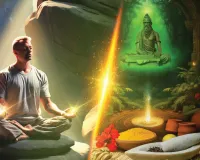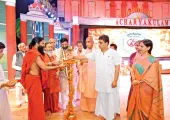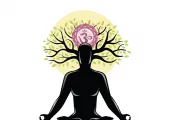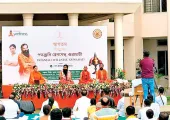Grihastha Ashram and other Ashrams
On

Pro. Rameshwar Mishra Pankaj
As a National Fellow of the Indian Council of Social Science Research, we noticed the importance of Grihastha Ashrama in the Dharmashastras while studying the Sociologies propounded in the Dharmashastras. According to him, Grihastha Ashram is the nurturer of the other three Ashrams. Gautam Dharmasutra says that 'grihastha ashram is the vagina of all other ashrams'. Because a celibate can be born only when there is a householder, that is, a celibate youth or a celibate girl will be born in a clan and only at a householder's place. In this way, no character of Brahmacharya Ashram can be born without Grihastha Ashram. Similarly, any Vanprasthi or Sannyasin also takes birth in a householder's house.
Here the teachers of Dharmashastra have not given any idea about any child born by a single woman outside the Grihastha ashram. The reason for this is that neither such a concept was prevalent in the world at that time, nor was there any idea of leaving any pregnant woman independent, that is, to live a free life without any worries and arrangements while maintaining herself. The teacher of religion could have accepted. That's why Manu and other Smritis have also emphasized that a woman should not be put in such a dependent position to live by her own system and in the same sense it has been said that leaving a woman independent means her Yogakshema. It is not religious not to bear the responsibility of the person, but to leave that responsibility on him - 'Na Stree Swatantryam Arhati'.
Manu says that people belonging to all the three ashrams of Brahmacharya, Vanaprastha and Sannyas get charity, alms and food from the householder, that is why the householder is the eldest and the best. A man desirous of inexhaustible heaven and worldly pleasures and opulence should try to adopt a householder's ashram. Weak minded who should not hold the householder's ashram-
Yasmattrayoavya Shramino Gyanenannena Chanvham I
Grihasthenaiva Dharyante Tasmajjyeshtha Shramo Grihi II
Sa Sandharyah Prayatyanena Swargamakshayamichchhata II
Sukha Chehechchhata Nityam Yoadharyo Durbalendriyahih II
(Manusmriti, Adhyay 3, Shlok 77 and 78)
Manu has also said that all the Vedas and Dharmashastras are of the opinion that Grihastha Ashram is the best. Because he follows all the three ashrams. Just as all the rivers and streams meet in the sea, in the same way the constitution of the people of all ashrams is from the householder's ashram.
Sarva Varna Dharmakaryani Samyak
Kritva Rajan Satyavakyani Choktva I
Tyaktvadharmam Darunam Jeevaloke
Yanti Swarga Natra Karyo Vicharah II
(Manusmriti, Adhyay 6, Shlok 89 and 90)
It has also been said in Shantiparva of Mahabharata-
Sarve Varna Dharmakaryani Samyaka
Kritva Rajana Satyavakyani Choktva I
Tyaktvadharmam Darunam Jeevaloke
Yanti Swargam Natra Karyo Vicharah II
(Mahabharata, Shantiparva, Adhyay 296, Shlok 39)
Denying those who used to argue and give that salvation is not possible by living in a householder's ashram, Kapil, the great yogi of Yoga, says -
Asana Grihastha Bhuyishtha Avyutkrantah Sarvakarmasu I
Rajanashcha Tathayukta Brahmanashcha Yathavidhi II
(Mahabharata, Shantiparva, Adhyay 270 Shlok 8)
That is, in the past, many householder Brahmins and householder kings have attained salvation by following their own dharma as prescribed. Those innocent people attained salvation while living in the Householder's ashram. It has also been said in the Shanti Parv that the men who condemn the men who lead a miserable life in the form of a householder while performing all the duties of a householder, are in fact manless and foolish people and they feel guilty-
Atha Ye Karma Nindanto Manushyah Kapatham Gatah I
Mudhanamarthaheenanam Teshamenastu Vidyate II16II
Deva Vai Dushkaramam Kritva Vibhutim Paramam Gatah II
Tasmad Garhasthyamudvodun Dushkaram Prabraveemi Vah II20II
(Mahabharata Shantiparva Chapter 11 Verses 16 and 20 )
The necessary ritual before entering the household ashram is marriage. Regarding the definition of the word vivah, it is said in Veeramitredaya:
Tatra Vivahashabdo Bahuprapana Ityasamaddhatorbhave Ghani Krite Vahanam
Vahah Vishishto Vaho Vivaha Iti Vyutpatya Nishpadyate I Vaishishtayam Cha Pratigrahadyashtavidopayanyatamopayen Swikritayam Homadisapta Mapadanayanantakarmabhissankritatvam I Tatha Vivahapadarthodwidalah Sidhyati, Swatvotpadanam Sanskaradhanam Cheti I Tadetatspashtikritam Paraskarena, Pitra Pratamadaya Grihitva Nishkramatityupakramya Pradakshinamagnima Ityadinaacharyaya Varam Dadatityantena Sutrena I Adaya Pratigrihya I Grihitva Haste Dhritva I
That is, the word marriage is derived from the word polygamy by suffixing Ghini with the sense of solution and carrying it is called Vah or special Vah as marriage. In this way, a marriage is a marriage only when it is accepted by means of Pratigriha etc. or by any other means, or after performing the rituals of Homa and Saptapadi, both the parties become cultured and accept each other. In this way the post of marriage is proved to be dual. For example, a two-lobed grain has two parts, it is called a grain only because of the presence of both. Similarly, when a man and a woman i.e. a young man and a young woman complete the sacraments and take a vow to lead a joint life and complete the Saptapadi etc., after that they become two integral parts of the same grain or the same object like a two-part grain. Both take a pledge to bear each other specially, that is why it is called 'marriage'. Paraskar Grihyasu- says that the marriage is considered to be completed only after the ceremony of exchange and acceptance by the father and grandfather etc. and the practice of circumambulation of the fire performed in the presence of the Acharya and only after that the person enters the Grihastha Ashram.
Daksha Smriti says that 'Patnimoolam Griham Patni' means the root of the householder is the wife. In fact, the word 'home' has been used because of the housewife. A girl child is brought up after taking it according to rituals, that is why she became a housewife and the house is called home only because of the housewife. Rigveda also says -
May the womb of Indra be born, and may the monkeys who are equipped with it carry it.
Jayedastam MAGHAVANTSEDU Yonistaditva Yukta Haryo Vahantu I
Yada Kada Cha Sunavama Somamagrishtva Duto Dhanvatyachchha I That is, O Indra, we are entering the householder's ashram with Jaya. Home is called from Jaya or housewife. That is the basis of the origin of man. So you speed up in this house, your horses keep it full with the power of God and provide us all the proper things needed for the householder's ashram.
In this way, performing one's duties forcefully and earning and increasing prosperity are the main efforts of the Grihastha Ashram.
The house is 'home' only because of the presence of the wife. From 'Home' is 'Grihastha Ashram'. Therefore, the word Grihastha is from the specially brought housewife and only after that the Grihastha Ashram begins. Other words for marriage are udvaha, parinaya, upayam and panigrahana.
Bringing the girl from her father's house with respect is Udvaha. The circumambulation of the fire is called Parinay. Holding a girl's hand is a water eclipse. That's why even holding the hand of a girl out of lust or infatuation is considered to be a marriage and that girl becomes the wife of the young man. That's why holding the hand of any girl has been considered a very big and important event in our country. Similarly coming close to each other is called upayam. Therefore, if a young man and a young woman come close to each other due to sexual love, then it is an upayam. Which is a form of marriage itself.
Udvaha, Parinay, Upayam and Paanigrahan, in fact, tell only one element of the marriage ceremony, but all these words have been used in the context of rituals in the religious scriptures. It is said in Tandya Mahabrahmin-
Imou Vai Lokai Sahastam Tau Viyantavabhutam Vivaham Vivahavahai Saha Navastviti (Tandya Brahmin 7/10/1)
That is, there was unity in heaven and earth, then they got separated. So they decided to marry each other and the sense of cooperation between them became intense.
In this way, marriage of bride and groom is actually the decision of mutual unity. This is also evident from the various types of marriage being given a place in the theological system. The three main purposes related to marriage are described in the scriptures-
1. Attainment of supreme bliss (Rati).
2. Offspring reproduction (species).
3. Execution of religious acts (Dharmasampti).
Out of these, Brahmacharya, Vanaprastha and Sanyas Ashram - for all three, people are obtained from Grihastha Ashram only. That is why Grihastha Ashram has been called the vagina of all the ashrams. It is possible to maintain and nurture education, ascetics, etc., by performing religious acts, and by continuing to flow religious traditions, and by performing virtuous deeds, it is possible to fulfill all the needs of the society. That's why Grihastha Ashram is the best ashram.
लेखक
Related Posts
Latest News
01 Nov 2024 17:59:04
जीवन सूत्र (1) जीवन का निचोड़/निष्कर्ष- जब भी बड़ों के पास बैठते हैं तो जीवन के सार तत्त्व की बात...




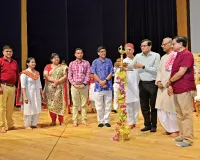

.jpg)
